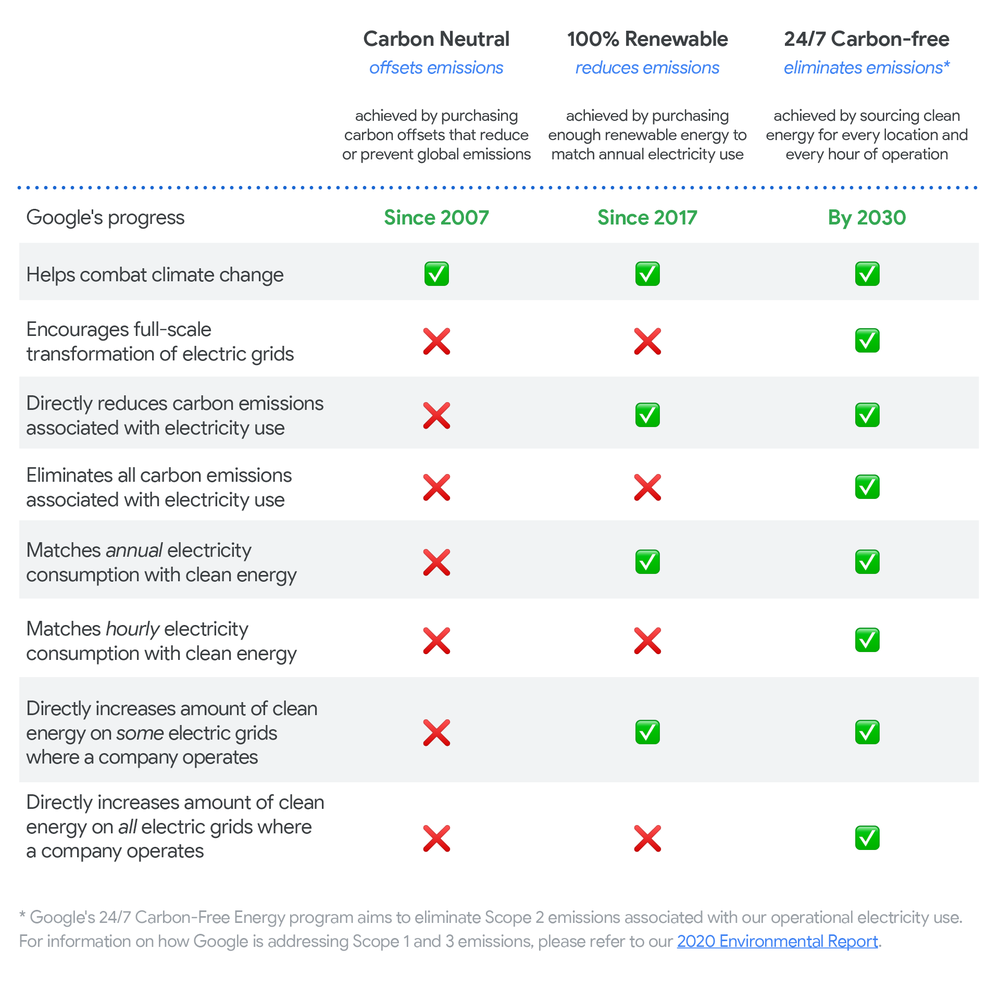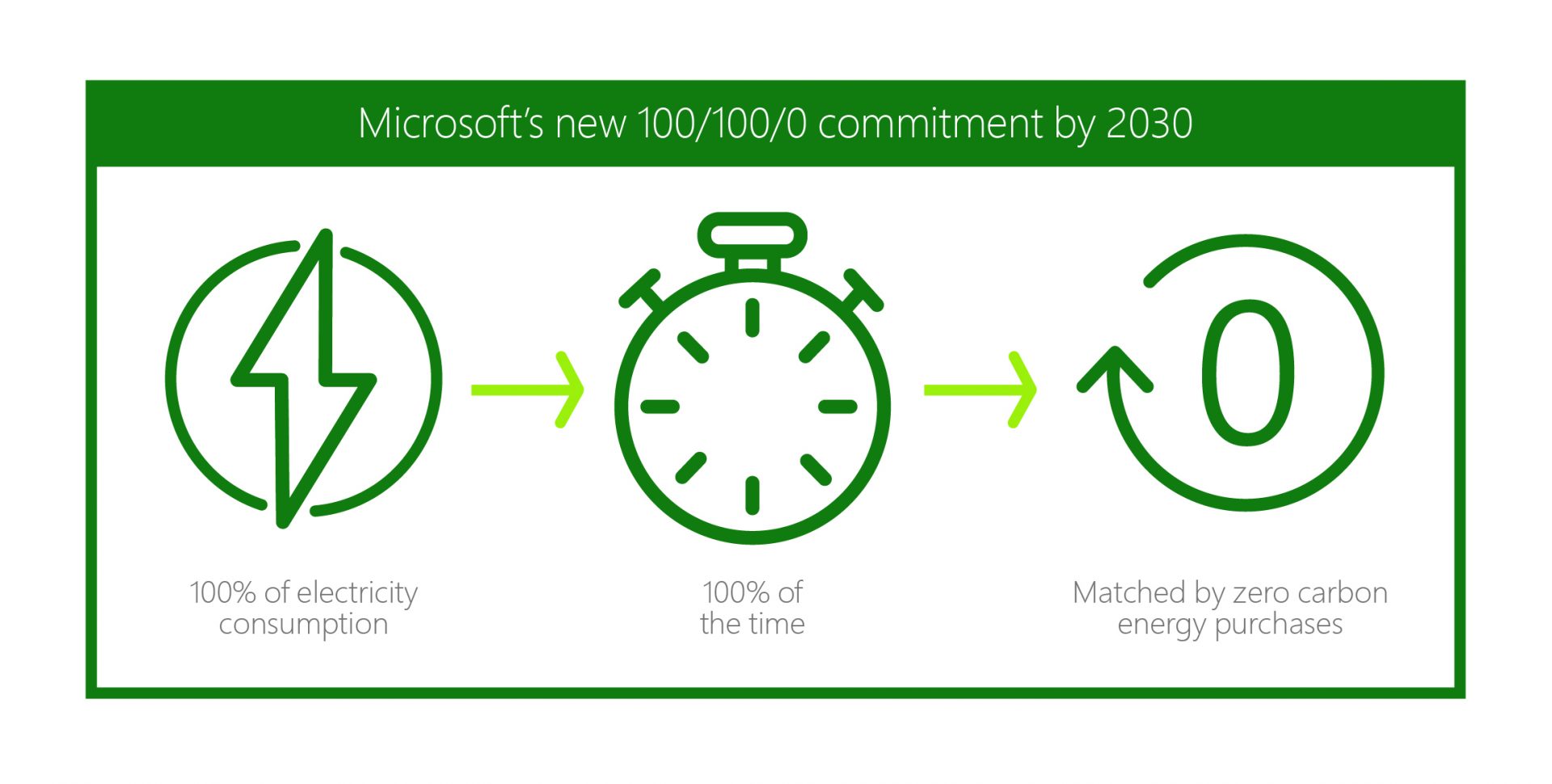Part
01
of one
Part
01
24/7 Green Energy Trends
Key Takeaways
- The cost of solar energy is comparable to natural gas generation, and the costs of wind and solar energy are expected to decline even further, which may well place them below natural gas generation in terms of the total cost in the near future. Recent findings have shown that the global GDP can be increased by 1.1% — equivalent to $1.3 trillion — by 2030 by doubling the use of renewable energy during that period.
- Google and Microsoft are among the first few companies that have partnered with AES Corporation to power their Virginia data centers using 24/7 clean energy.
- High capital costs, social limitations, and the limited availability of suppliers are some of the major barriers to the adoption of renewable energy.
Introduction
24/7 clean energy may be a relatively new concept, but large companies and organizations are joining hands to accelerate the transition to carbon-free energy. Many companies have committed to completing the shift to 24/7 clean energy by 2050. This research includes an overview of the factors influencing the shift to 24/7 clean energy, prominent companies that are investing in it, and the barriers / limitations that prevent customers from switching to renewable energy.
Findings
Drivers of the Shift to 24/7 Clean Energy
The concept of 24/7 clean energy is not just attractive, but also offers several benefits over traditional sources. An account of the factors that are driving the adoption of 24/7 clean energy has been provided below.
Reliability and Cost Savings
- The demand for 24/7 Clean Energy (aka Carbon-Free Energy or CFE) has been on the rise in the corporate sector due to several reasons. Reliability and cost-savings are two of the reasons why CFE is becoming increasingly attractive for many large businesses.
- The Solar Potential Analysis Report prepared for the Minnesota Solar Pathways Initiative demonstrated that the cost for solar energy is comparable to natural gas generation and that Minnesota can achieve 10% solar power generation by 2025.
- Furthermore, it was found that by 2050, a combination of the different types of renewable energy, including Wind, Solar, Storage, and other generation, can help Minnesota achieve 70% of its total electrical load at costs that are comparable to natural gas generation.
- Wind and solar generation costs are expected to decline even further in the near future, which make them even more desirable.
- The biggest concern with using most renewable energy sources is the intermittent nature of supply, i.e. unavailability of power supply during certain times of the day or certain seasons. Google demonstrated that sourcing clean renewable energy for ‘every hour’ of operation is possible by combining more than one source, e.g. wind and solar. The image below showcases Google’s use of 24/7 clean energy for one of its data centers.
- Several large companies in Minnesota are not only driven to adopt 24/7 clean energy, but are also influencing policy. These companies have joined hands to create the Minnesota Sustainable Growth Coalition with a goal to reduce greenhouse gas emissions, and switch to carbon-free energy, by 80% by 2050. These moves are driven by the advancement in renewable energy technologies and the reliability as well as cost-savings that they have to offer.
Economic Growth
- Shifting to renewable energy has the potential to impact the global economy positively. Recent findings have shown that the global GDP can be increased by 1.1% — equivalent to $1.3 trillion — by 2030 by doubling the use of renewable energy during that period.
- Many countries have experienced this growth by investing heavily in renewable energy. For example, Ukraine experienced a 3.7% growth in GDP, while Japan saw a 3.6% increase. Others include India at 2.4%, South Africa at 2.2%, the US at 1.8%, and Australia at 1.7% growth. Conversely, countries that are heavily dependent on fossil fuels faced GDP declines of up to 2%, including Russia at 0.7% decline and Saudi Arabia at 2% decline in GDP.
- Given the potential for growth in GDP, countries are investing heavily in renewable energy and this is becoming another driver of 24/7 clean energy. Apart from that, support for newer technologies through government policy, e.g. President Biden's climate initiatives, has also proved to have a positive impact on the adoption rates of the technologies. New policies and the potential for economic growth are influencing the move to 24/7 clean energy.
Hourly Certificates
- Companies have known to become carbon-neutral overnight by purchasing renewable energy equivalent to their consumption through a process known as 'greenwashing'. Even though they may have purchased renewable energy equivalent to their consumption, it is likely that their operations are not entirely dependent on renewable sources; this means that they may be using a mix of renewable and brown energy sources, while still holding a certificate of being carbon-neutral.
- To ensure that a company not only sources energy from renewable sources, but also consumes only renewable energy for its operations, a new kind of certificate has been launched and it is known as 'hourly certificates'. Hourly certificates determine how much of a given business' operations are dependent on renewable sources, as opposed to just having purchased renewable energy. A company may have surplus amounts of renewable energy available, but that doesn't mean that they are not using fossil-fuel-based energy sources for at least some of its operations. Hourly certificates were designed to monitor not only the sources but the consumption as well.
- This trend is driven by software that have the ability to match renewable energy sources to the consumption profile of consumers on an hourly basis. An example of such a software is Flexidao that collects energy consumption data, monitors results through blockchain technology, and shares the data with stakeholders and auditors.
Businesses Investing in 24/7 Clean Energy
A few companies have taken the charge of the commitment to switch to 24/7 clean energy. Brief descriptions of three such companies, including Google, AES Corporation, and Microsoft, have been provided below.
- Google was one of the first companies to recognize the fact that clean energy is not being utilized 24/7 even when many large businesses claim to be reliant on renewable energy sources. The tech giant analyzed consumption patterns from one of its own data centers (see image below) to show that renewable energy was being consumed for only 61% of its total consumption.
- Google became carbon-neutral in 2007 and later switched to 100% renewable energy usage in 2017. Being carbon-neutral means the company purchases carbon offsets and helps reduce global emissions, while 100% renewable energy usage refers to purchasing renewable energy equivalent to annual consumption, however, neither of these guarantees 24/7 clean energy dependency. Google has vowed to eliminate emissions by switching to 24/7 carbon-free energy by 2030.
- Google has already started the journey and has partnered with AES Corporation to power its Virginia data centers using 24/7 clean energy.
AES Corporation
- AES Corporation is a Fortune 500 energy company that operates utilities. The utility company has partnered with Google to bring Google's Virginia data centers up to 90% in compliance with 24/7 clean energy.
- AES has invested heavily in renewable energy resources and also works with other companies to help them in the transition to carbon-free energy. For example, it partnered with KIUC (Kaua‘i Island Utility Cooperative) to develop the Lāwa’i Solar and Energy Storage Project to offer renewable energy at scale. The image below shows the power consumption and its sources used by KIUC.
Microsoft
- Microsoft, like Google, has also partnered with the AES Corporation to power its Virginia data centers using 24/7 clean energy. AES will be employing its power projects totaling a capacity of 576 MW, including battery storage, wind, and solar energy projects.
- The tech giant aims to reach the 100/100/0 goal, which represents the company's "commitment to have 100% of its electricity consumption, 100 percent of the time, matched by zero-carbon energy purchases by 2030". The image below showcases the company's 100/100/0 vision.
Barriers to Consumers' Adoption of Renewable Energy
Although many customers are aware of the pressing concerns that behoove us to source our energy from renewable sources, certain barriers and limitations cause them to continue to use traditional energy sources. Three such barriers / limitations have been detailed below.
Capital Investment
- The initial capital required to switch to renewable energy is a major barrier to its adoption, specifically by the average consumer. Even the most common type of renewable energy source for households, i.e. solar panels, requires a hefty investment to get it going, at least for low-income households. That said, the costs seem to be decreasing with the advent of new technology and widespread adoption.
- Even though developed countries may be faring well in terms of renewable energy adoption, underdeveloped and developing countries still struggle to find the motivation to invest the initial capital needed for renewable energy sources. For example, results from a survey conducted in Kenya showed that 49% of consumers did not opt for renewable energy sources due to the high equipment cost.
Social Limitations
- Consumers' misconceptions can sometimes prevent them from switching to renewable energy. These may include public awareness issues, lack of information, and the perception that renewable energy is more expensive when all associated costs are considered, among other things.
- One such issue is what's called the NIMBY (Not in my backyard) syndrome, according to which people may resist renewable energy projects, e.g. solar panels, in their homes and/or neighborhoods. This may be due to several reasons, including but not limited to "landscape impact, environmental degradation and lack of consultation concerns among local communities."
Limited Number of Suppliers
- The lack of experienced professionals is another reason why people have been known to resort to renewable energy sources. This may be increasingly relevant, especially in developing countries, where new technologies take longer to develop fully as opposed to developed countries.
- For example, a survey of Malaysian residents outlined that the limited availability of renewable energy suppliers is a major barrier to its adoption in the region.
Research Strategy
For this research on 24/7 clean energy, including the drivers, examples of companies investing in the technology, and the barriers to its adoption, we leveraged the most reputable sources of information that were available in the public domain, including research articles, the World Economic Forum, AES, and the Washington Post, among others.





